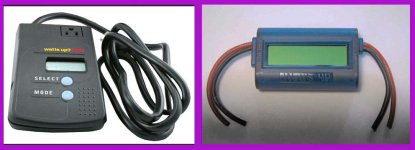There are two kinds of Watts UP meters.
The one on the left is easiest to use, as you plug your charger into it, but it's very high level. It will tell you how many watts your charger uses and you do some math to estimate how much actually went to your battery, much in the manner Rassy explains.
The one on the right is intended to be attached (a) between the battery and controller on your ebike and also (b) between the charger and battery. If you had two of them, as they are inexpensive, the latter could be a permanent connection but the one on the bike you would probably attach with connectors for occasional checking. When mounted on the bike, they are too hard to install where you can see them when riding.

When you put it on the charger, all you can get is the amp-hours (Ah) needed to refill your battery. In practice, I've found that this will be the same as the Ah that were used while riding. The meter also displays the equivalent watt-hours. What you won't get is instantantaneous amps or watts being used while riding. Here a pic of one wired into a charger cable,
View attachment 1
You really want to put it on the bike? Easy with a home-built as we have our battery cables open. On a manufactured bike, battery wires are inside the frame, where they should be, nice and safe. You have to dig them out, and attach the wattmeter. You usually do it with connectors so soldering skills are needed. In addition, you cannot install it easily so you can view the data while riding. Most of us look at it after a ride. The meter does store peak amps, so at least we know what the peak watts were.
Here's what it would look like on a bike like yours, with the slide out battery. The battery wires were brought outside and connectors installed, allowing the meter to be connected.. The connectors were actually installed to allow other batteries to be connected, but they also allow a wattmeter.




